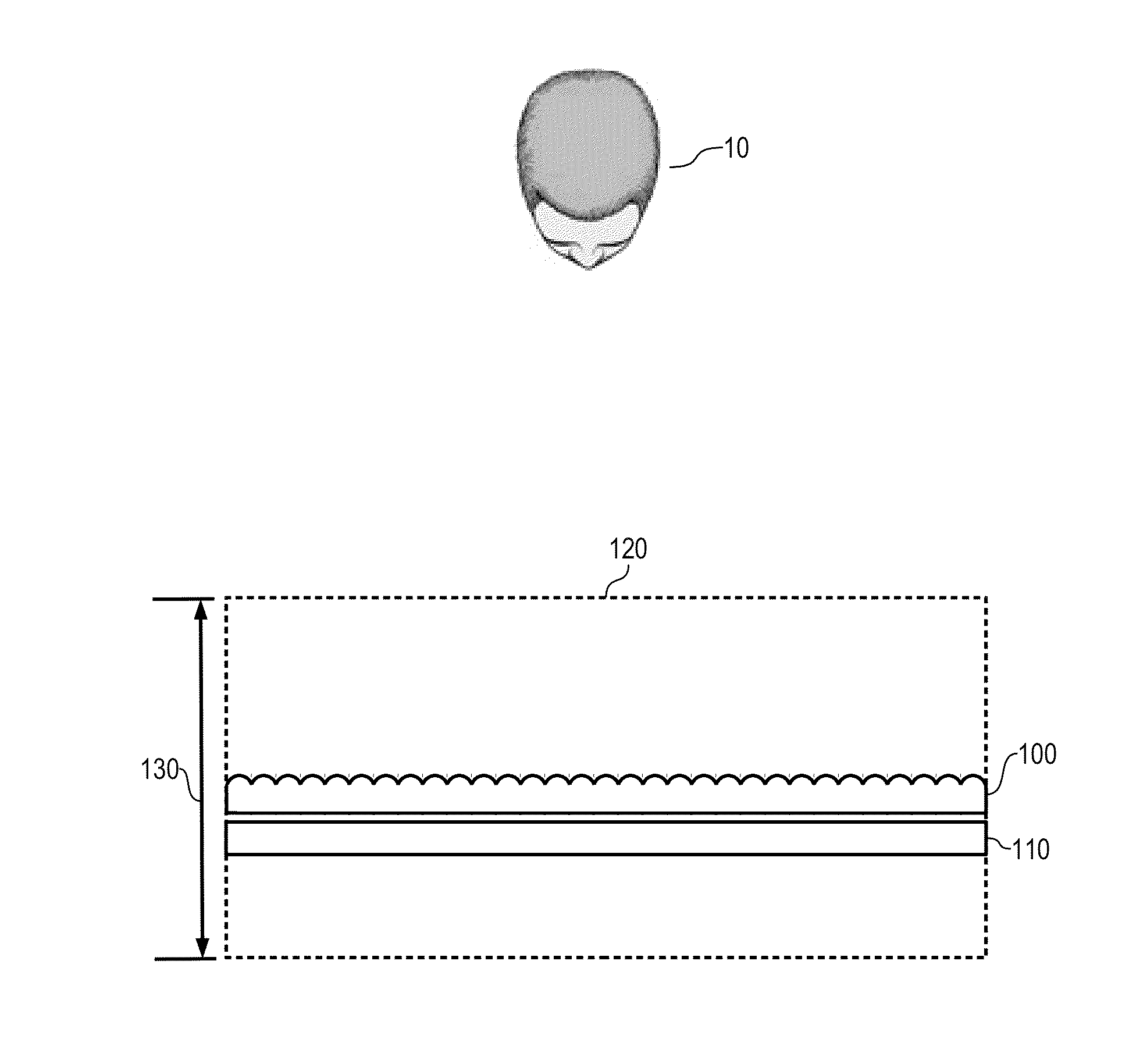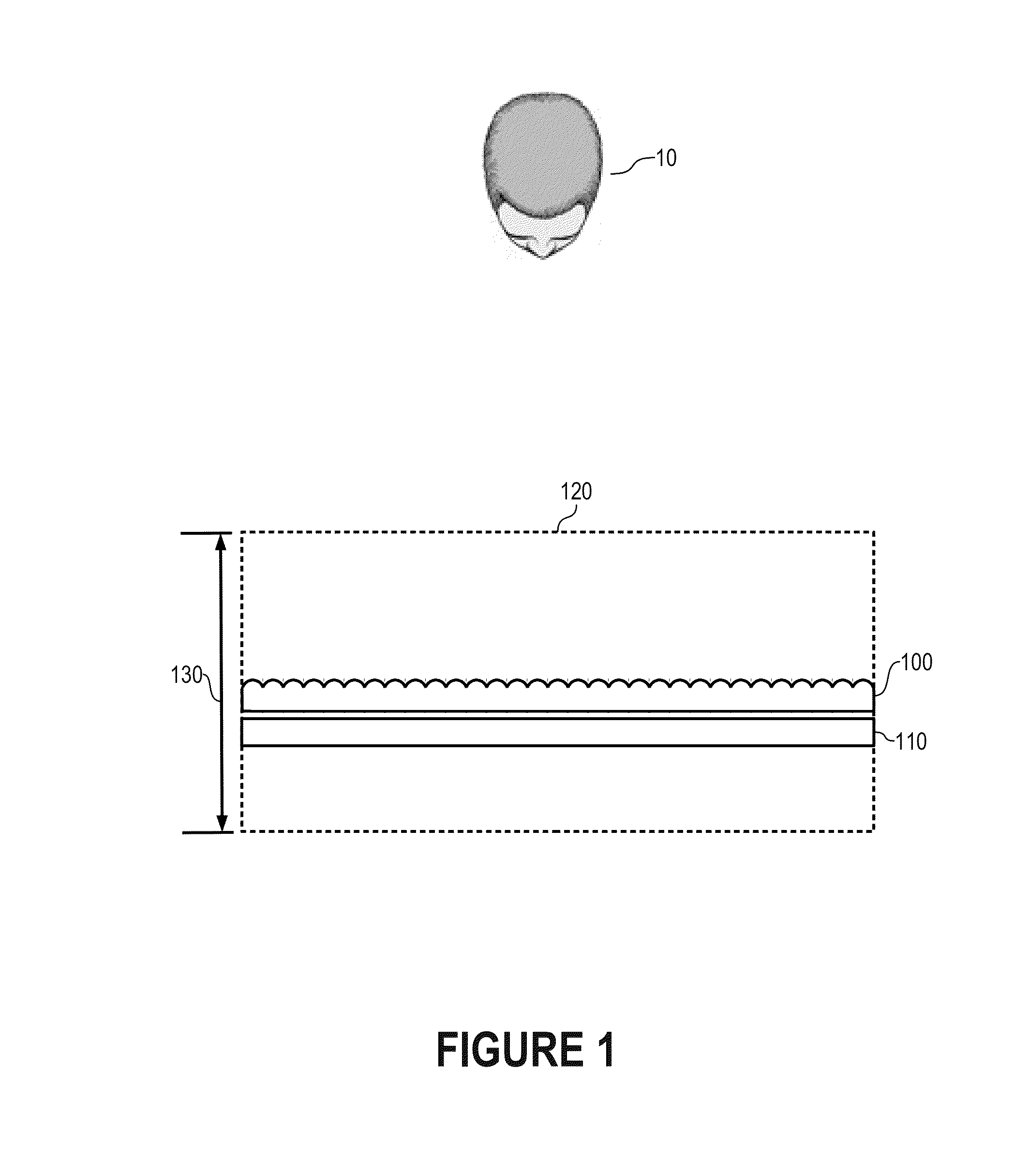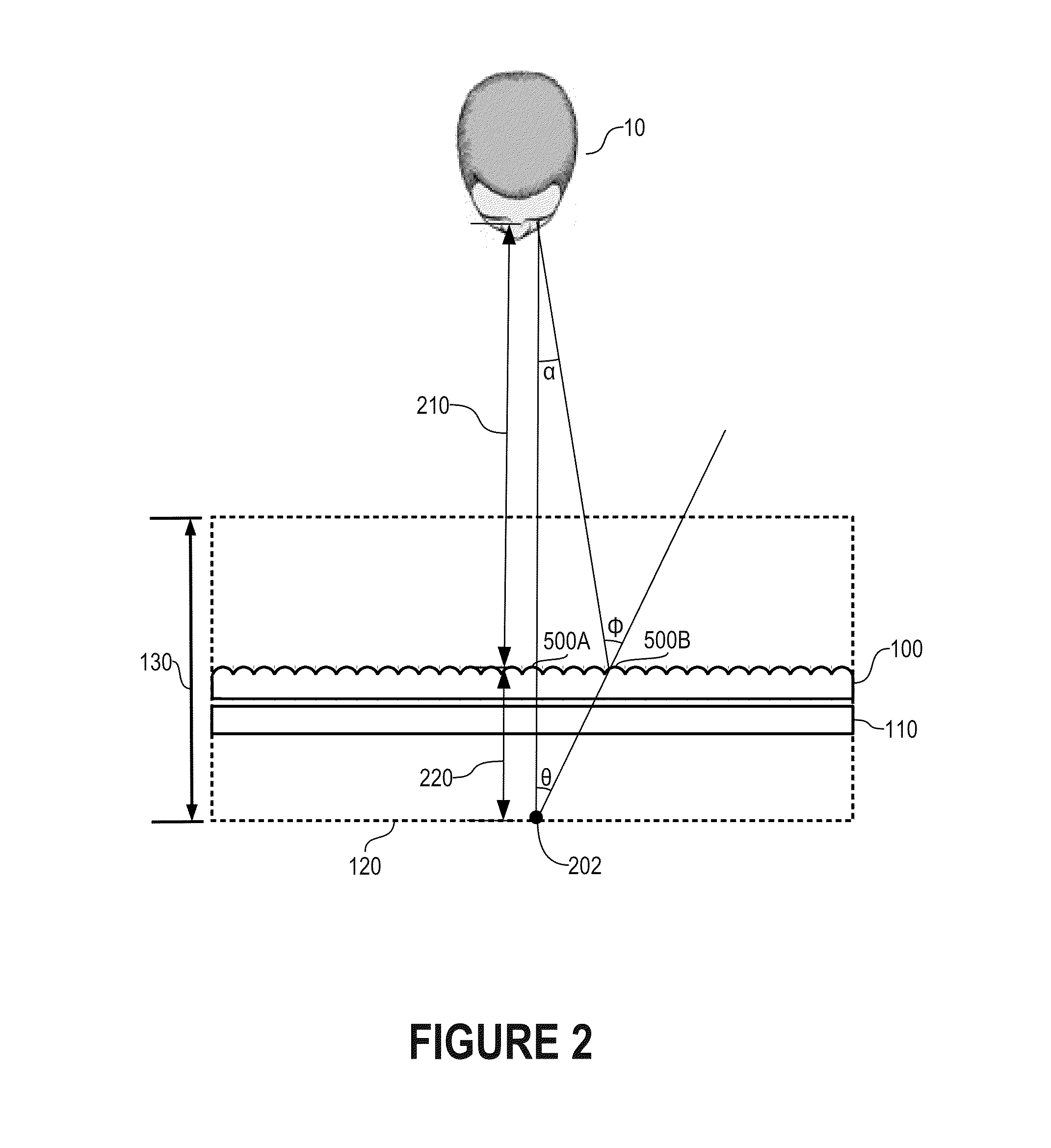Perceived Image Depth for Autostereoscopic Displays
a technology of autostereoscopic display and image depth, which is applied in the field of video autostereoscopic display, can solve the problems of increasing the number of optical aberrations and becoming problematic, and achieve the effect of reducing these optical aberrations and a more flat field of view
- Summary
- Abstract
- Description
- Claims
- Application Information
AI Technical Summary
Benefits of technology
Problems solved by technology
Method used
Image
Examples
Embodiment Construction
[0016]In accordance with the present invention, a depth 130 (FIG. 1) of a projection area 120 in which parts of an autostereoscopic display that includes a lenticular array 100 and a display 110 is dramatically improved—e.g., to a meter or more, 20-30 times what is seen in conventional autostereoscopic displays—by determining a relationship between depth 130 and an autostereoscopic display configuration at which a portion of display 110 can be visible at multiple locations (lenticular crosstalk). This relationship establishes a limiting configuration within which lenticular crosstalk is minimized. Once this relationship is determined for a desired depth 130, the autostereoscopic display is constructed to meet or exceed the autostereoscopic display configuration to ensure that lenticular crosstalk is only possible at depths of projection beyond depth 130.
[0017]The autostereoscopic includes a focal length of individual lenticles of lenticular array 100 and a number of views represente...
PUM
 Login to View More
Login to View More Abstract
Description
Claims
Application Information
 Login to View More
Login to View More - R&D
- Intellectual Property
- Life Sciences
- Materials
- Tech Scout
- Unparalleled Data Quality
- Higher Quality Content
- 60% Fewer Hallucinations
Browse by: Latest US Patents, China's latest patents, Technical Efficacy Thesaurus, Application Domain, Technology Topic, Popular Technical Reports.
© 2025 PatSnap. All rights reserved.Legal|Privacy policy|Modern Slavery Act Transparency Statement|Sitemap|About US| Contact US: help@patsnap.com



